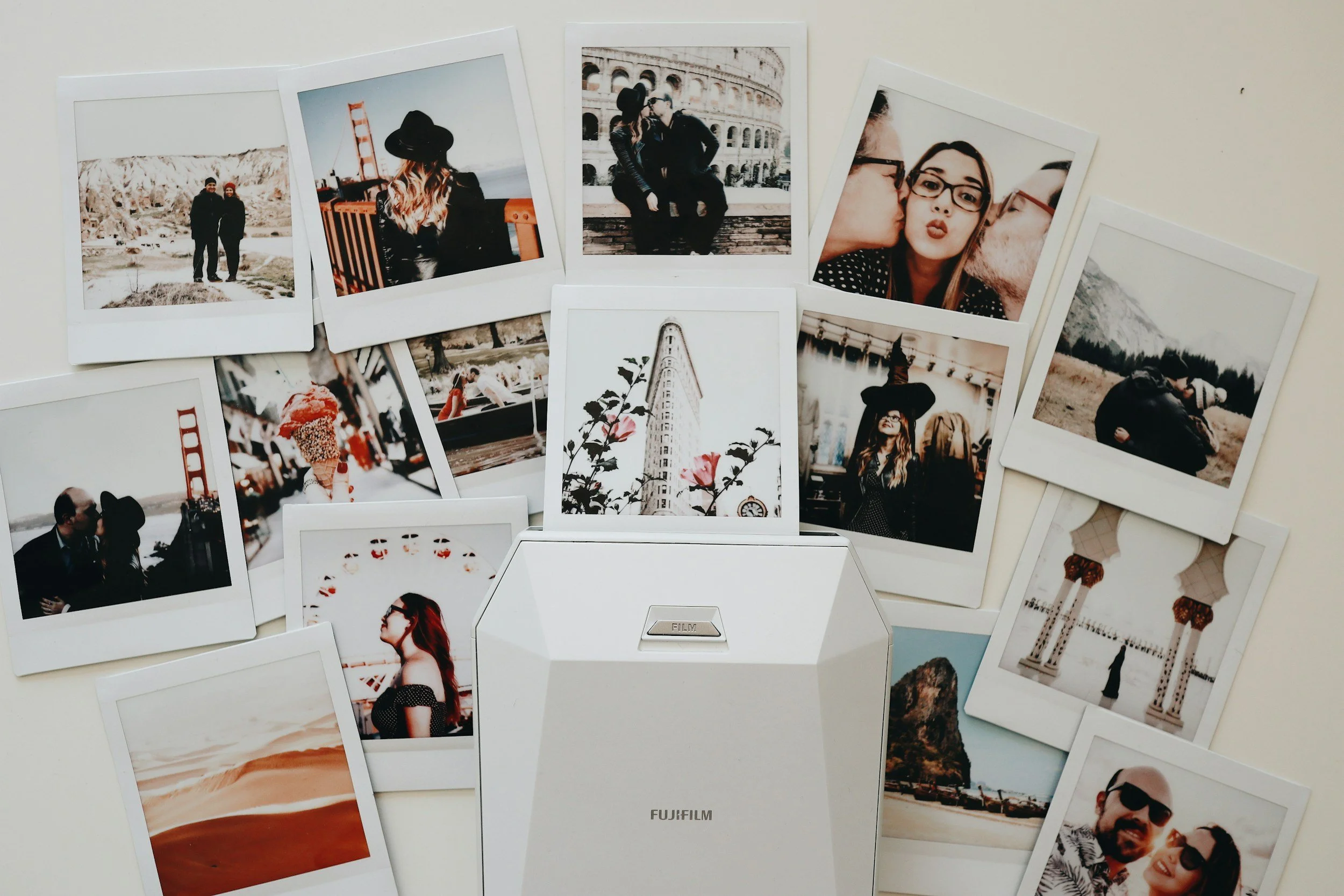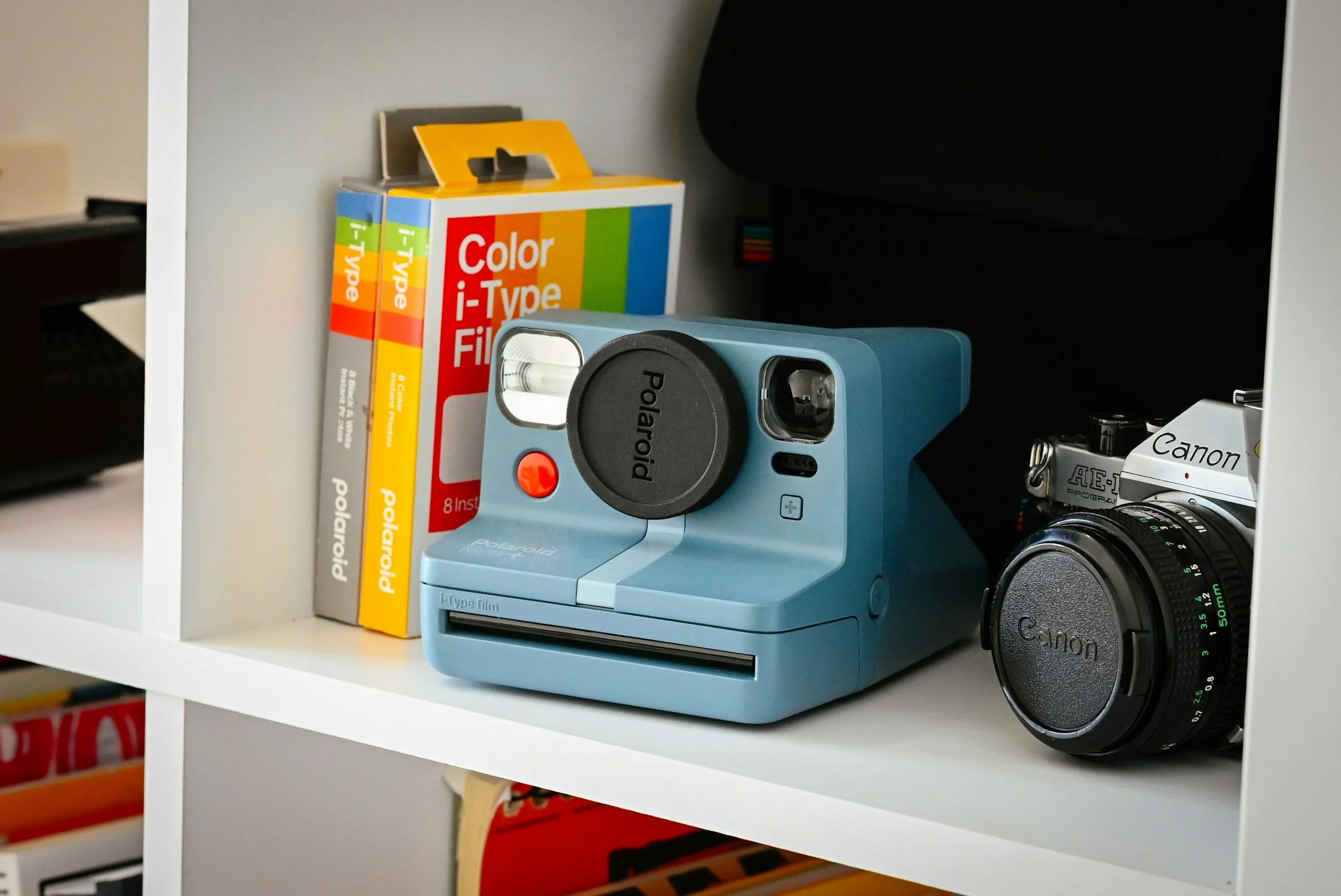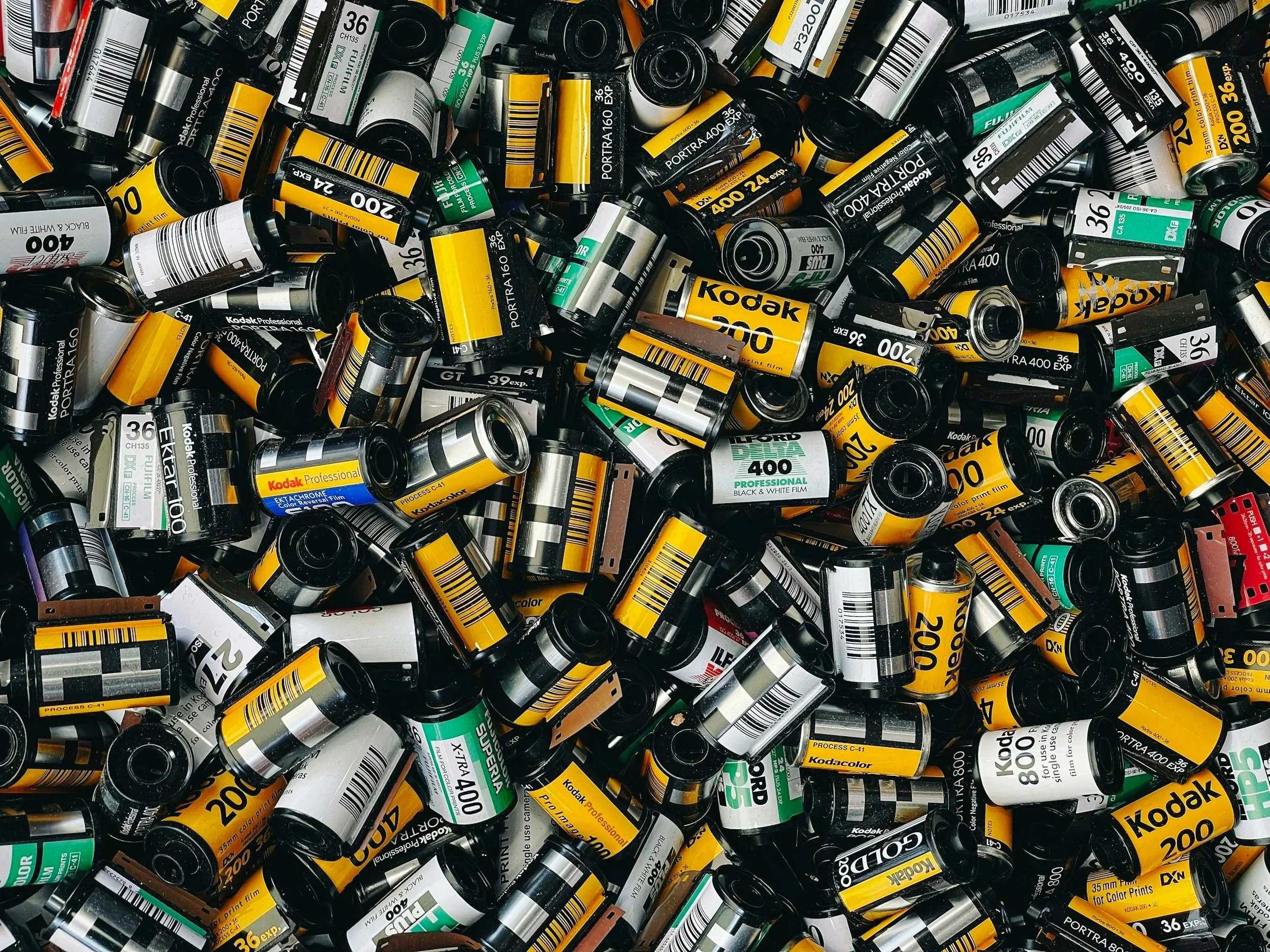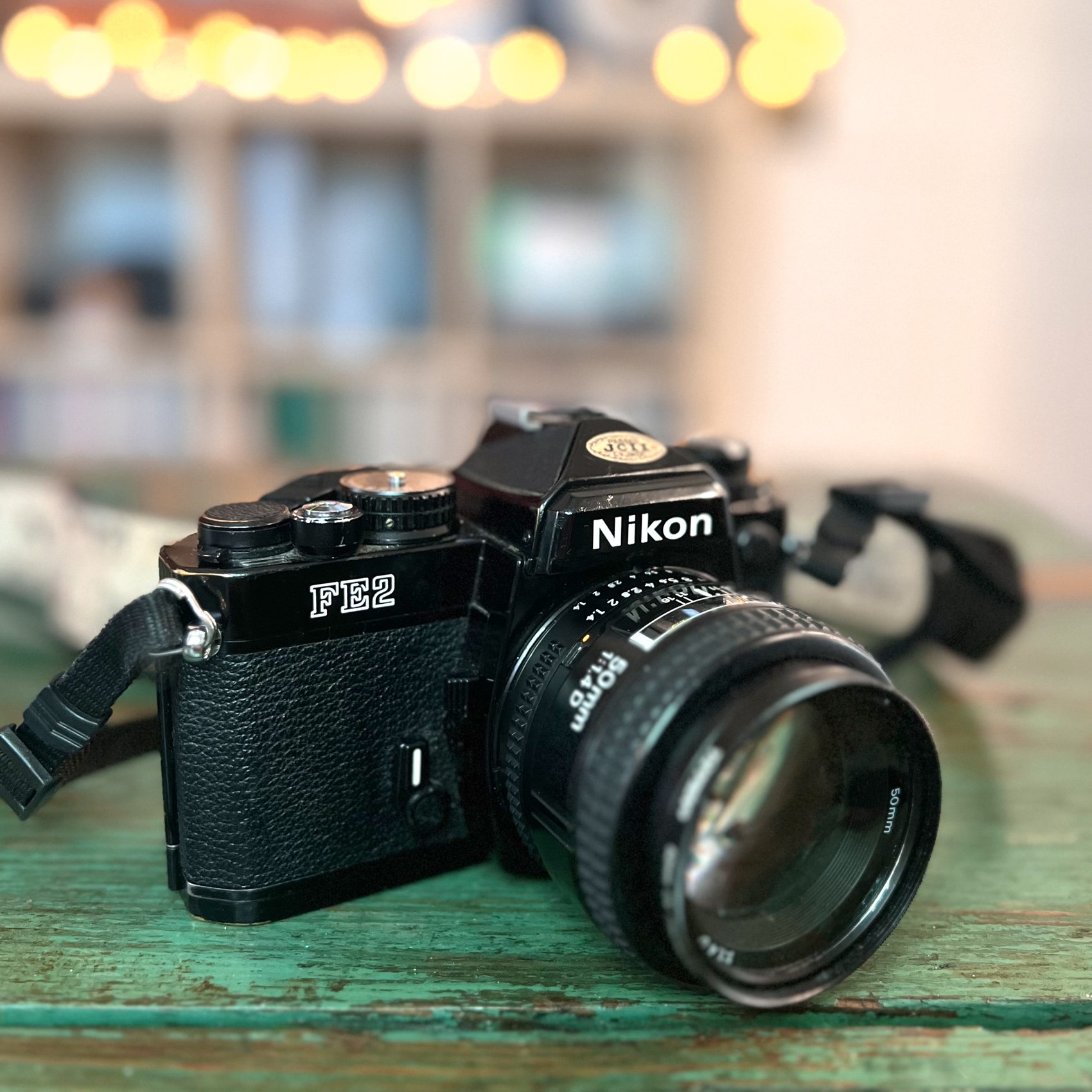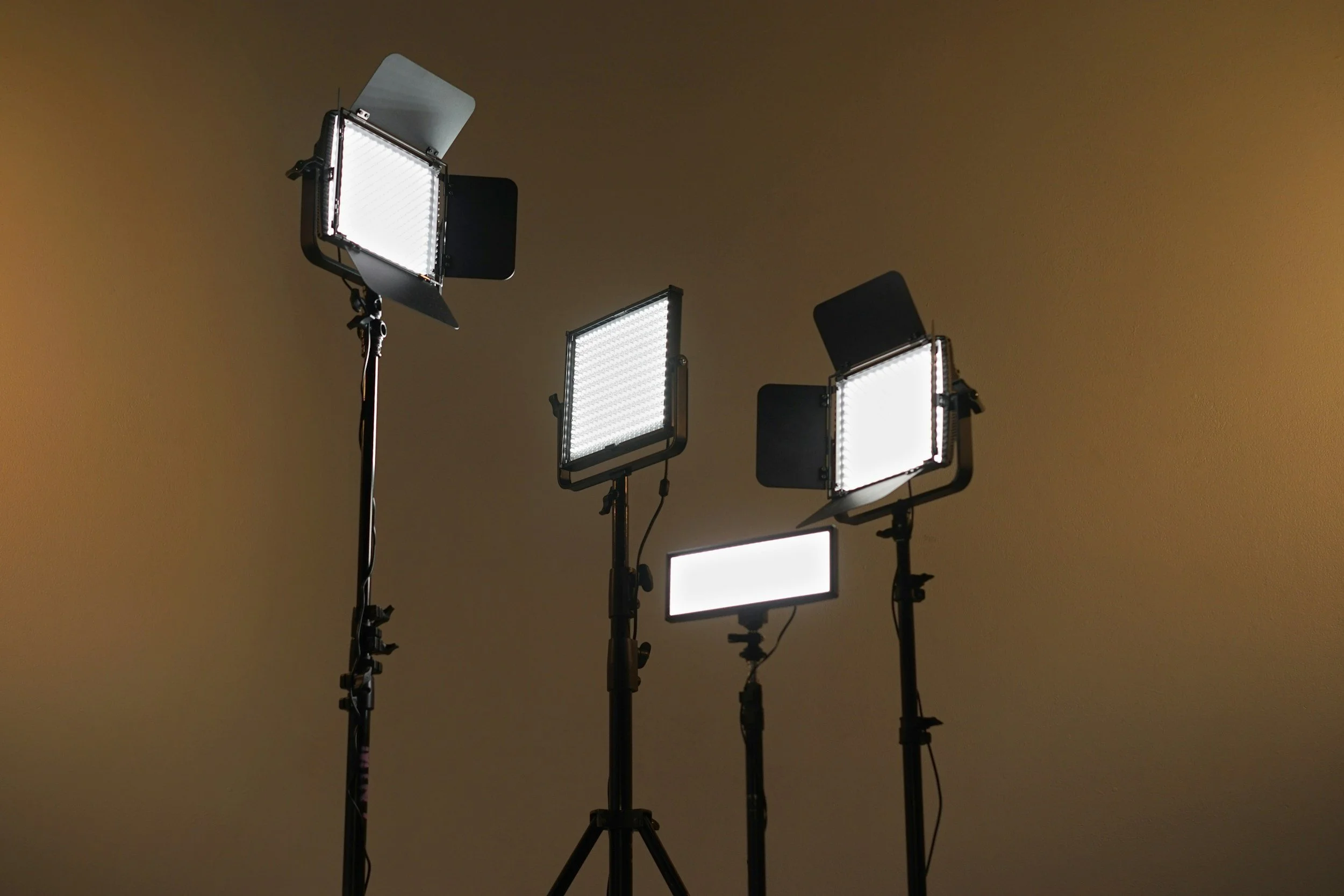Black Friday and Cyber Monday are actually two of my favorite days of the year. And not necessarily because of the shoppings deals, but because it’s typically the first weekend I get to relax after the busy fall photography season and Thanksgiving holiday stress. I plan to sit on the couch sipping hot chocolate, watching a holiday movie and browsing online for deals on items that I needed to buy for my business anyway. I love saving money any way that I can, so if there’s a camera or lens that I’ve been eyeing for a while, I always hold off until Cyber Weekend. There are a ton of incredible deals on Amazon & B&H Photo this year, so I figured I’d share all of the products I’ve been eyeing over the last few months. And if you’re looking for gift ideas for the photographer or videographer in your life, this may spark a few ideas for you!
(By using the affiliate links and/or codes in this blog post it supports Myles Katherine Photography. We may get a small kick back by you doing so.)
1. SONY A7 IV MIRRORLESS CAMERA
I recently had the opportunity to try out this camera (you can read my full blog post about it here) and I immediately missed it when it wasn’t in my possession anymore. The thing I love about Sony cameras is how small and compact they are, including the lenses. They are also perfect for photographer/videographer hybrid shooters. As someone who considers themselves a photographer, and not necessarily a videographer, the incredible autofocus of the Sony A7 IV made video creation SO EASY. I found myself wondering if maybe I could be a videographer and that maybe it isn’t quite as intimidating as I’ve been letting myself believe. It also has dual card slots, in-body image stabilization, 4K video up to 60 fps, live streaming functionality, a 33 MP full-frame sensor, and super fun color profiles you can experiment with. It’s majorly on sale this year through B&H Photo for $1998. It’s usually $2698! There’s also a bundle deal that includes a 28-70mm f/3.5-5.6 zoom lens for only $2198. Not to mention, it comes with a backpack, a memory card, and an extra battery! I’ve seriously been considering this deal for myself… We’ll see if I finally take the leap into the Sony world! If you’re on the hunt for something more like a point-and-shoot/vlog camera that is a bit more affordable, the Sony ZV-1F is $100 off on Amazon too!
WHERE TO BUY
SONY A7 IV
B&H Photo
SONY ZV-1F
Amazon
2. GO PRO HERO 13 CREATOR KIT
I always bring a Go Pro with me on my travels because they are SO super small and inconspicuous. They are way easier than using a giant video camera and are great for all weather conditions. They are quick to turn on so you never miss a moment, which has come in handy more times than I can count. I’ve used them for my YouTube channel, Cameras & Cats, for years. I have the Go Pro Hero 9 and I’m so ready for an upgrade. The Go Pro Hero 13 has up to 5.3K at 60 fps (insane!), 27 MP still photos, HyperSmooth 6.0 stabilization, and of course, a waterproof and rugged body for travel and action videos. Amazon is offering a Creator Kit, which includes everything you need for on-the-go content creation. I’m just absolutely amazed by what these tiny little cameras can do. I still remember my first Go Pro, and the first thing I said when I opened the box was, “It’s so tiny!!” As someone who is used to dragging giant DSLR cameras around with me, it’s always a nice break when I get to spend a day out and about with just my Go Pro.
WHERE TO BUY
Amazon
B&H Photo
3. APPLE AIRPODS MAX WIRELESS OVER-EAR HEADPHONES
I just recently heard about the Apple Airpods Max headphones, and I need them ASAP. I love my AirPods, but I lose them constantly. My husband upgraded to the AirPods Pro Max with noise cancellation and I’ve been jealous ever since. The noise cancellation is a game-changer. You can experience music without the outside world interfering, and they are perfect for drowning out the airplane noises when you’re flying. Honestly, I much prefer over-ear headphones than in-ear Airpods, because I find my ears start to hurt after a little while. The Apple AirPods headphones come in a bunch of cute colors too. I kind of love the light purple ones personally! They are $120 off on Amazon for Black Friday/Cyber Monday. You can find them here!
WHERE TO BUY
Amazon
4. APPLE IPAD 11-INCH WITH A16 CHIP
Not even joking, the Ipad I use is from 2013. I’ve been considering upgrading for a LONG time. For me, I actually use my iPad as a third screen when I’m working/editing photos. I haven’t upgraded yet because I don’t actually store any files on it, but it has to stay plugged in at all times because the battery is shot. So yes, it’s time for a new iPad for me, and I’m definitely floating the idea of this 11-inch iPad because it’s $75 off, which means it’s only $274. It’s probably about time to move on to a new iPad for me…
WHERE TO BUY
Amazon
5. WD 14TB DESKTOP EXTERNAL HARD DRIVE
It’s kind of a bummer that every year I have to spend money on a new external hard drive because I fill them so quickly. But what’s not a bummer, is that they tend to go down in price every year. Somehow, you can get this 14 TB WD Hard drive for $169 at B&H Photo. 14 TB!!!! Umm, I’ll definitely be buying this, no questions asked. AND it’s USB 3.2 which means it’s super fast and that is SO important for photographers and videographers while editing. There’s also a Seagate 28 TB USB 3.0 External Hard Drive that’s $100 off too! So it depends on your budget and how much space you think you need, but I’ve had great experiences with both WD and Seagate drives.
WHERE TO BUY
WD 14 TB USB 3.2 EXTERNAL HARD DRIVE
B&H Photo
SEAGATE 28 TB USB 3.0 EXTERNAL HARD DRIVE
B&H Photo
6. SIGMA 24-70MM F/2.8 DG DN II ART LENS (SONY E)
When I was testing out the Sony A7 IV I mentioned above, I was using the Sigma 24-70mm f/2.8 Art Lens. It’s super small and light for a 28-70mm zoom lens, yet it still holds up to lenses like the Canon 24-70mm f/2.8 L II lens. You can check out tons of sample photos I took with the Sigma f/2.8 lens here. I always recommend zoom lenses, especially if you’re just starting out and you want ONE lens that is multi-purpose and can handle any sort of lighting scenario. The fact that it is f/2.8 means it’s great for low light, especially if you’re shooting indoor events or weddings. I used the Canon 24-70mm f/2.8 L lens as my main lens for over a decade. I just recently upgraded to the Canon RF 28-70 f/2.0, which is an INCREDIBLE lens (you can read a full review of it here), but is HUGE and weighs a million pounds. This Sigma zoom lens is just so light and easy to work with, which is a major factor for me. I’m not even lying, the Canon RF lens I just mentioned is so gigantic, I can barely hold it up for an extended period of time. If you’re wanting to get into professional photography and/or videography, Sony is really the way to go if you’re a small person or just want lightweight but high performance gear. However, if you are a Canon shooter, I highly recommend the Canon RF 24-70mm f/2.8 which is $300 off on B&H Photo for Black Friday/Cyber Weekend too!
WHERE TO BUY
SIGMA 24-70mm f/2.8 DG DN II ART LENS
B&H Photo
CANON RF 24-70MM F/2.8 LENS
B&H Photo
7. FUJIFILM INSTAX MINI LINK 2 SMARTPHONE PRINTER BUNDLE
I already have an Instax Square printer that I use all the time to print photos out for my wedding clients, but I want the Instax Mini printer too! It’s only $80 on Amazon for Black Friday which is such a good deal. I use my Instax Square printer ALL THE TIME. You can literally print any photo you want from your phone and turn it into a little polaroid. It’s so much fun and is a great way to share photos with family and friends. No one has time to send photos to Walgreens anymore and go pick them up, so just save yourself the hassle and enjoy printing them yourself into adorable little prints you can hang on your fridge. :)
WHERE TO BUY
Amazon
8. CANON EOS R6 MARK II
Ok, so if we’re talking about the one thing I really, really, really want this year, it’s the Canon R6 Mark II. I currently shoot with the Canon EOS R as my main mirrorless camera, and I love it, but there are a few things it’s missing that I could seriously benefit from. The R6 Mark II has dual card slots, in-body image stabilization and 4K video up to 60 fps. It also has better battery life and a more refined grip and body. And who knows, maybe I’ll really go for it and just upgrade to the Canon EOS R5 Mark II. That’s the dream, though it is significantly more expensive. The benefits with the R5 Mark II are higher resolution images, up to 8K video, more advanced autofocus, and a more pro-level photography game. The good news is that they are both on sale this year, with the R6 Mark II on sale for $1999 ($300 off) and the R5 Mark II at $3899 ($500 off)!!!
WHERE TO BUY
CANON EOS R6 MARK II
B&H Photo
Amazon
CANON EOS R5 MARK II
B&H Photo
9. APPLE 2025 MACBOOK AIR 15-INCH LAPTOP WITH M4 CHIP
Is it even Black Friday without a good Macbook deal? If you’re looking for a lightweight travel laptop that’s super fast with lots of storage, the 256 GB 15-inch Macbook Air is on sale for $949 on Amazon. In today’s world, I feel like getting a high-performing laptop under $1000 is kind of a miracle, so I’d take advantage of this deal while you can if you’re on the hunt for a Macbook Air. If you’re looking for a Macbook Pro, B&H Photo has a pretty sweet deal going on with the Macbook Pro 14-inch M4 at $1749.
WHERE TO BUY
Amazon
10. POLAROID NOW GENERATION 3 INSTANT CAMERA
I recently received a Polaroid Now and I absolutely love it. I’m used to using vintage Polaroid cameras but now that I have a newer version that’s just as fun, I can safely store my vintage cameras away so they don’t get damaged at photo shoots. The Polaroid Now camera can take Polaroid i-Type or 600 film, which is nice because i-Type film is more affordable than 600 film. It comes in tons of different colors and is super cute. Not to mention, it’s only $100 this year on B&H Photo, which is truly the most perfect gift for any photographer. Polaroid cameras are special and will immediately make the holidays more fun for everyone. Just take turns passing the camera around and watch the photos come to life! I’m obsessed with Polaroid photos. I can’t help it! Oh, and don’t forget to pick up some film!
WHERE TO BUY
POLAROID NOW GENERATION 3 INSTANT CAMERA
B&H Photo
Amazon
I-TYPE FILM
B&H Photo
Amazon
HONORABLE MENTIONS
SanDisk 2TB Portable SSD on Amazon for $179.99
Canon EOS R100 with RF 18-45mm f/4.5-6.3 Lens Kit on Amazon for $499
DJI RS 4 Gimbal Stabilizer on B&H Photo for $459
Fujifilm Instax Mini 12 Camera on B&H Photo for $83.95
ONA (The Clifton) Leather Camera Backpack on B&H Photo for $374.25
I hope this guide helped you comb through some of the deals going on this year! The holidays are always so crazy and stressful, but make sure to take some time for yourself and maybe even buy yourself a little something. We all work so hard ALL year long, and then we have to spend our money buying presents for everyone else?! Just remember to reward yourself in some way too. Whether that’s just spending a day on the couch snuggling with your pets, or finally sorting through some old photographs on your hard drive. For me, January/February is my time to slow down and recuperate from the long year, so I’ve got my eye on that prize. :)
Thanks so much for stopping by! Check out my full 2025 Gift Guide for more ideas here! Or you can see lots more 2025 Cyber Weekend camera & film recommendations on my Amazon Storefront or B&H Storefront. Happy Holidays!
<3 Myles Katherine







